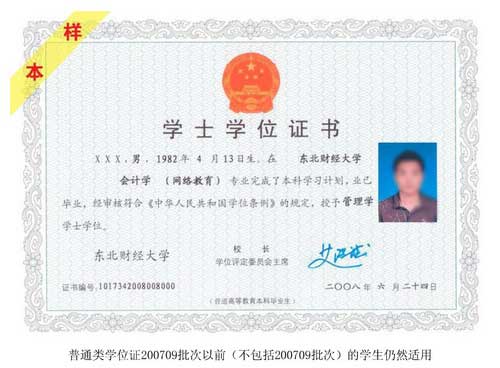初中数学试讲教案模板(中学生期中考试个人工作总结(3)成绩分析28班)(2)
(1)一个两位数,十位数字为7,一位数比十位上的数字小4,这个两位数为()。
(2)一个两位数,个位的数字是6,十位的数字是5,这个两位数是()。
(三)100加减法复习。
回顾要解决的主要问题:
学生能熟练计算100以内的数,并能在特定情况下发现并提出100以内的数加减能解决的问题。
审核的主要内容有:
口算100以内的加减法,在实践中用计算解决简单的问题。主要有“十进制加减法”、“一位数加减两位数”、“两位数加减两位数”等。在计算方法上,重点采用口算法和竖算法。同时初中数学试讲教案模板,允许学生选择自己喜欢的计算方法,促进算法的多样化。
(四)知时间回顾。
回顾要解决的主要问题:

了解钟表,并能熟练阅读“整小时”、“半小时”和“小时和分钟”。
点评主要内容:
学生可以通过看钟面正确识别“整小时”、“半小时”和“小时和分钟”。
相关问题类型主要包括:
1、 看着钟面,正确识别出“整小时”、“半小时”和“多少分钟”。
2、Judgment:给定钟面和时间,学生可以判断对错。
3、按照平时的生活习惯,可以按时间排序。
4、 给学生几分钟的时间,让他们在几分钟内讲述这一刻。
(五)人民币对“元、焦、分”的理解评论。
学生在日常生活中已经了解了本单元的知识,但由于其抽象性,仍难以掌握。因此,“元、焦、分”的单位换算仍然是一个难点。
回顾要解决的主要问题:
精通人民币单位及其关系,能准确进行人民币的简单计算。
点评主要内容:
1、人是各种面额的人民币。
2、可以准确转换人民币的单位“元、角、分”。
3、会购物,会做简单的人民币计算,用人民币知识解决实际问题
就像问题一样简单。
(六)Statistics.
回顾要解决的主要问题
了解条形图(一个格子代表1个单位)和统计表格,通过数据收集和整理的过程,利用图表中的数据解决一些简单的问题。
三、Review方法和措施:
1、首先引导学生回顾和反思自己的学习过程和收获。讲一下这学期学了哪些知识,讲的比较含糊,哪些知识需要巩固。
2、 充分考虑学生身心发展特点,尽量采用游戏方式,设计一些有趣的数学活动,让学生快乐复习,更好地掌握最初步的知识和技能.
3、 把握知识的重点难点和知识之间的内在联系,让学生在原有的基础上有所提高。
4、 加强家庭教育与学校教育的衔接,适当教给家长一些正确的方法,引导孩子复习。
5、提高对学生的评价,关注学生自身的纵向比较,关注学生已经掌握了什么,具备什么能力,哪里需要努力。
6、在平时教学知识的基础上做好困难学生的辅导,复习相关知识点。
四、审核时间表:
1、location………………………………1课时
2、20 ………………2个课时内的数字缩写和减法
3、图形分组…………………………1课时
4、100 了解……………………1课时内的数字
5、了解人民币…………………………1课时
6、100(一)…………2个课时)以内的加减法
7、知道时间…………………………1课时
8、求法、统计……………………1课时
终审方案三
一、修改指导思想:
本学期四年级的英语教学工作告一段落。师生投入了密集的复习工作。对于各个年级的师生来说,这是最忙碌的季节。复习让学生巩固所学知识,查漏补缺,让学生顺利完成本学期的学习任务,在期末考试中取得好成绩,为以后的学习打好基础。因此,对于老师和学生来说,期末复习尤为重要。在复习过程中,要避免把复习课变成朗诵课,使复习失去真正的意义,变得枯燥乏味。复习要从学生的实际情况出发,因材施教,针对性强。 .
二、审核时间:12月5日----1月5日
三、Review 目标:
1、 根据要求背诵和认识一些单词,可以完成单词书写和分类的练习。
2、识别课本中一些词组的用法,可以完成英汉翻译练习。
3、 掌握课本中出现的句型,以及一些与课本内容相关的简单语法知识;能够区分课本中出现的句型,并用翻译来补充所学的句子。
4、能认读课本中的短文,能独立完成一些易读的题。
四、评论内容和要点:
1、word。词汇是英语的基础,是复习的重点。
1) 按词性复习单词。
2)根据词汇复习单词。
2、短语。短语是学习英语的关键,是学习句子、分类和掌握短语的基础。
3、 句子。句子是学习英语的关键,也是本书的重点和难点。
1) 指导学生在上下文中复习句子。
2)根据句型引导学生对比复习,教授学生适当的语法知识。
五、review 策略
1、 采用集中审查和独立审查相结合的方式。
所有词汇以粗体字和星号字为主,每个单元出现的关键句型都经过听、说、读、写训练。
语法:一般疑问句及其答案,本教材中的几个特殊疑问句及其答案,名词的单复数形式。
2、阶段审核实施方法:
第一阶段:复习每个单元的关键句型,检查每个单元的单词背诵和课文对话。
第二阶段:单词复习和测试,包括听写和单词分类。注重英汉翻译练习中的句型、问答训练、连词造句。
第三阶段:在学生自主分类复习的基础上,设计一些综合练习,配合复习资料进行强化指导,找出共同解决的共同问题,进行个别指导,力求做到每一个学生得到提高。
3、review 措施
(1)按单元顺序对词、词组、句型进行分类,复习相关知识点。
(2),加强听力、口语和书面练习。
(3),每次复习一个单元,及时做报纸和练习巩固,以便及时检查遗漏和解决问题。
六、审核时间表。
七、需要注意的问题
1、在复习过程中,要特别注意留出一定的时间让学生背单词。
2、课文中的句子,学生需要知道它们的中文意思。
总之,紧张的审查工作已经全面展开。这期间主要是为了弥补差额。我们要以学生为主体,从实际出发,让所有学生都能得到一定的提高和进步,而不仅仅是在考试中。良好的成绩也为以后的学习奠定了坚实的基础。
最终审查计划 4
一、学情分析
经过一学期的学习,大部分学生对英语的兴趣越来越浓厚,学习态度也比较端正,逐渐养成了较好的学习习惯。但是,学生在英语学习上仍然存在一些差距。班上大部分学生英语水平较好,优秀学生学习习惯较好,喜欢在课堂上说话,动脑筋,及时完成作业,上课认真听讲。有少部分学生经常错过或不做作业,学习有困难。 According to the different situations of students, I will take corresponding measures to review and lay a solid foundation for future learning.
二、About review
In order to consolidate, strengthen and develop the content of students' learning, teachers need to lead students to systematically summarize and sort out the knowledge they have learned, deepen their understanding and mastery, so as to further develop students' language ability.
(一)Review content and goals:
1. Letters: Proficiency in listening (recognizing the pronunciation of the letters), reading (accurate pronunciation of the letters), and writing (upper and lowercase letters) of 26 letters; the alphabetical order and the ability to remember some common letters Abbreviations, etc.
2.Vocabulary: Be able to accurately memorize the words and phrases of the four sessions required in this semester's textbook; understand the three sessions of vocabulary in the textbook by listening, speaking, and reading, and encourage capable students to remember as many vocabulary as possible.
3.Dialog: Can read aloud fluently, encourage memorization of the dialogues in the text, and can accurately understand the context and thematic function of the dialogue.
4.句型结构: Proficiently understand the main sentence structure of each unit, and can accurately use it in the context.
(二)Review points:
1、Break through the key and difficult points.
(1)Students clarify the learning requirements of each unit, and the teacher guides the students to read, memorize, and write more after class (words and sentences required by the Fourth Meeting).
(2) Word memory is the difficulty of elementary school students’ English learning. Teachers should help students develop good habits of memorizing words, such as memory according to pronunciation rules, memory according to word meaning, associative memory, etc., and help students remember one by one The words are converted into a few words and a string of words.
(3)For the key and difficult content, teachers should promote students' mastery of language knowledge through more inspections and more feedback.
2、Return to the text and connect with reality.
The transformation of language knowledge into language skills requires meaningful training. The content of the textbook is contextual, meaningful, and has a complete plot, so students are guided to put language knowledge into the discourse memory, return to the textbook at the review stage, and require students to read the textbook content thoroughly. When reviewing daily communicative language and sentence patterns, it is more appropriate to integrate learning with practice and to cultivate students' initial language ability.
核潜艇除外